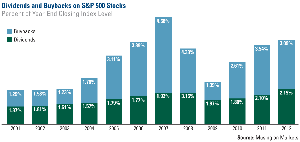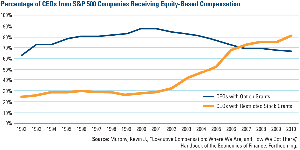|
|||
Every Gold Coin Has Two SidesBy Frank Holmes Just as every coin has two sides, every data point that doesn’t meet expectations usually has an upside somewhere. For instance, although the gold price has fallen with the strengthening U.S. dollar, the yellow metal is appreciating in Japanese yen. So when negative news about the economy came out this week, along with the U.S. Labor Department reporting that the country added only 88,000 jobs in March, investors found reasons to be encouraged. For one, the Federal Reserve is apt to maintain its stimulative easing course and keep interest rates low. With inflation above the current interest rate, a negative real interest rate increases the attractiveness of U.S. dividend-yielding stocks and gold. I believe both investments will continue to be viewed as the safe havens of the world. The news that the U.S. is not recovering as expected may also repair some of the damage done to gold by research firm Societe Generale. Its bearish report asserted that because of expected rising interest rates, a strengthening U.S. dollar and a recovery in housing and jobs, gold’s bull run would end. The ongoing European debt saga will likely drive gold as well. Many people, including CNBC’s Amanda Drury, have been asking me why gold did not respond on news of the seizure of bank deposits in Cyprus. Going back more than four decades, the yellow metal historically has experienced a seasonal drop this time of year, yet today’s trading behavior does not reflect the fearful conditions ideal for a gold rally. (Click on images to enlarge) As a result of this perplexing situation, some highly respected gold experts have tossed around the idea that the price of gold may be manipulated. Mineweb’s Lawrie Williams writes that when the European markets open, gold and silver fall, but climb when the U.S. market opens. This is “a pattern directly contrary to that which had been seen pre-Cyprus,” suggesting that the precious metal “needs to be kept in its place more than ever lest a move into it by the big bank deposit holders really precipitates banking Armageddon.” We’ve seen plenty of evidence that central bankers in the developed countries intend on continuing their easing policies, driving up balance sheets. Take a look at the rise in the balance sheets as a percent of GDP from the largest developed countries. The European Central Bank (ECB) tops the list, with the balance sheet approach half of its GDP. Williams says central banks need to continue to print money to “maintain the pretence that the global economic situation is under control, which it surely is not,” says Williams. This opinion is echoed by my friend, Ian McAvity. In his Deliberation on World Markets newsletter, he says “the orchestrated reopening of Cypriot banks creates two euros despite claims to the contrary.” Most importantly, the fact that “gold did not surge on these developments for the second most important currency teetering on the brink adds weight to the case for surreptitious central bank interventions,” says McAvity. McAvity says “surreptitious,” CLSA’s Greed & Fear Author Christopher Wood calls it a “grandiose monetary experiment” which may be “unprecedented in recorded financial history.” He believes that there is an “outright embrace of the eroding distinction between monetary and fiscal policy” and instead of moving away from its unconventional easing policies, “the central banks are moving further and further away from the exits.” But there is a much more important issue that has been raised because of Cyprus’ and the eurosystem’s “startling inequality of treatment,” says CLSA’s Russell Napier. He questions whether the eurosystem works in a political sense. He writes:
An avid sports enthusiast would translate this “loss of democracy and the rule of law” to a game where the referees are making unfair calls, adding rules and changing boundaries to control the outcome. Americans express this loss as having freedoms taken away, however, the primary difference between the U.S. and the European Union is the fact that Americans elect their officials. British politician and leader of the U.K. Independence Party, Nigel Farage, warned about the dangers of non-elected socialist Brussels bureaucrats 18 months ago. In a video that went viral, Farage berated the council, calling the euro a failure and pointing out that unelected officials without “any democratic legitimacy” had removed elected officials in Greece and Italy from office like Agatha Christie kills off characters in her murder mysteries. I met Farage in 2011 when I was at a CLSA conference in Hong Kong. I was pleasantly surprised that we shared professional backgrounds, as he was formerly a metals trader. I liked him when I met him and respect his courage for speaking out against the injustices. Gold investors, keep in mind that gold coins and gold jewelry are not “get-rich-quick” schemes. As I talked about in my interview with CNBC, gold is like car insurance. No one wants a car accident, but just because one hasn’t happened, doesn’t mean you drop your policy. In a Low Yielding Environment, Seek Dividends I often say that money goes where it is treated best, and Russell Napier’s following comment rings true today: “Perhaps nothing changes human behavior more profoundly than the arbitrary and unfair acts of authority.” The factors that will be driving markets in this low yielding environment and governments’ questionable policies is for investors to find investment that offer a return OF their money, not return ON their money. And the tranquil oasis of choice will likely be large, dividend-paying U.S. companies, many of which pay higher yields than the 10-year Treasury. Take a look under the hood of the S&P 500 Index to see how important dividends, along with buybacks, have become to the overall index. This chart, created by Professor Aswath Damodaran of the “Musings on Markets” blog and republished by Business Insider, graphs the powerful twin engines of dividends and buybacks as a percent the S&P 500. During the early years of the new century, both dividends and buybacks made up less than 2 percent of the overall index level. During 2004 through 2007, they began making up a larger part of the index, climbing to a 12-year high in 2007. That was the same year the S&P 500 hit an intraday record high of 1,576. Now, over the previous four years, these figures have been increasing once again. Companies have been buying back their stock at record levels. In 2009, buybacks only made up 1.39 percent of the index level; by 2012, buybacks grew to comprise more than 3 percent. To a lesser extent, dividends have increasingly made up more of the index level, increasing from 1.97 percent in 2009 to 2.19 percent last year. Companies have become focused on the return-on-capital model, such as revenues-per-share and earnings-per-share, which may reflect the way CEO compensation has changed over the past two decades. Previously, executives primarily received option grants, which incentivize them to focus on the short-term stock price. However, as you can see below, while the percentage of CEOs receiving options has been declining slightly, the percentage of CEOs receiving restricted stock grants has jumped considerably. This means that the executives’ interests are more in line with shareholders’ and are incentivized to think about total return and dividend payments. In today’s investment environment with low yields, savvy investors will continue to look for safe havens and better yielding alternatives, with the fortunate recipients being gold and dividend-paying stocks.
###
Want to receive more updates like this one? Sign up to receive email updates from Frank Holmes and the rest of the U.S. Global Investors team, follow us on Twitter or like us on Facebook. The commentary references the investment theory of an investment as insurance against a separate market event that could negatively affect performance of an investment. The reference does not guarantee performance or a safeguard from loss of principal by investing in that asset. By clicking the links above, you will be directed to third-party websites. U.S. Global Investors does not endorse all information supplied by these websites and is not responsible for their content. |





